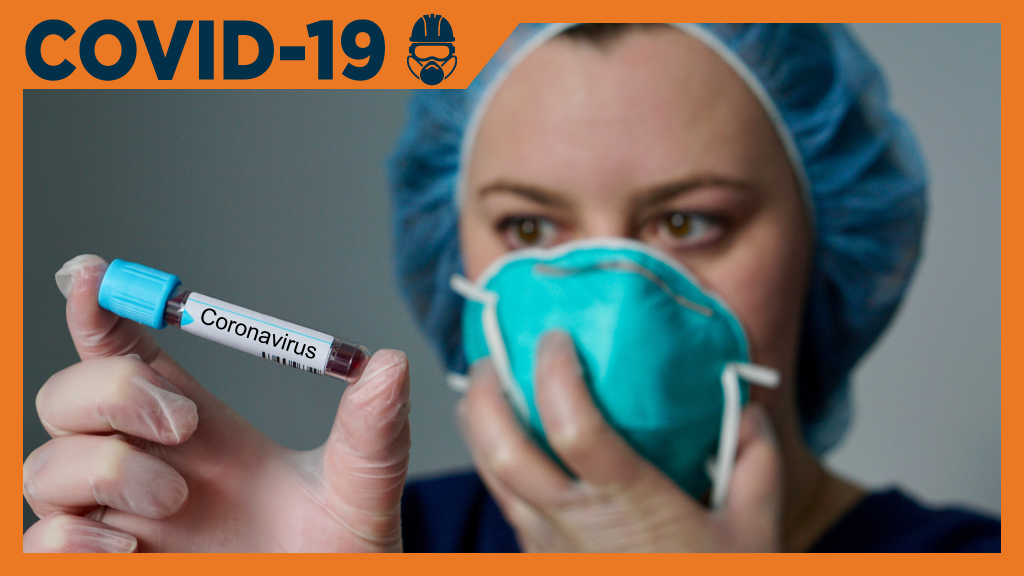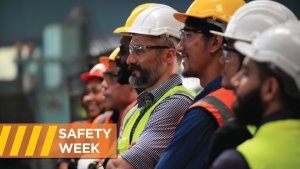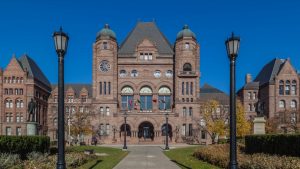The Ontario government is working on plans to bring COVID-19 testing to Ontario construction worksites, but beyond that there are many more questions than answers on how the program would roll out.
As laid out by the province’s executive lead for testing and strategy Dr. Dirk Huyer in an interview, mobile testing units could be sent to jobsites with advance notice and testing of workers for the virus would be undertaken. The swabs would be taken to one of the province’s 20 labs where results would ideally be learned within 24 hours and relayed to the subjects.
Workers who tested positive would be contacted within 24 hours by public health authorities for contact tracing purposes and all of the worker’s co-workers within the previous 14 days would be alerted within another 24 or 48 hours.
It’s a working scenario said Huyer with more specific details to be determined over time following comprehensive meetings with stakeholders in each sector.
“I don’t have all the answers by any stretch, but first and foremost, the testing plan is evolving in response to what is occurring with the pandemic and what we know about the pandemic,” said Huyer, the province’s chief coroner who is working for the government on testing on a temporary basis.
The Ontario government announced a multi-phased “enhanced plan” for COVID-19 testing on May 29 that includes expanded testing of primary populations such as long-term-care workers and first responders, and then “Targeted Campaign” testing of secondary populations. Among those secondary targets there is a list of what are called essential workplaces that includes construction.
Those populations would see testing of asymptomatic people who “are at risk of exposure to COVID-19 through their employment.”
“If a concern is in a place of business where there may be increased concern about COVID activity we are going to work together to bring a team to the facility to do swabbing within the facility,” Huyer said.
The testing would be combined with “aggressive” tracking and tracing of contacts, stated the government planning document.
The government will have its first testing “bus” available this week, Huyer said. Sectoral stakeholders are currently said to be consulting with relevant ministries, which in the case of construction means there would be multiple channels of consultations with various ministries. The first phase of expanded testing started May 24 and is to run two weeks so it is not foreseen that any of the testing programs for the secondary workplaces or settings will be in place until June 8 at the earliest, according to the government’s posted timetable.
The construction sector has developed sophisticated protocols to prevent the spread of COVID on its worksites, and that is “crucial. That is the most important,” commented Huyer.
The mobile testing approach is appropriate in cases where it is not practical to send workers out in the field to one of Ontario’s 131 assessment centres, explained Huyer
“We are providing an opportunity to facilitate testing,” he remarked. “It would then be developed what would work best.
“So if you go to a construction site, to be able to get all the workers, they would need to know in advance it is coming, then they would decide whether they attended for that particular testing and what the way of the exact test would be…the planning would occur in the workplace, with employers and employees thinking through what made sense.”
Record-keeping with individual tracking of workers will be important in the construction sector where some workers go from site to site, Huyer said.
“People forget things,” he said. “If we know what they have done, it makes it a lot easier for those who are trying to track backwards to find all the contacts to be able to identify them much more quickly. And the more quickly you do that, the more quickly you can stop those people who might have been exposed before they are infectious.
“If you find out, say, a carpenter (who also worked at another site) had COVID, and that was the day after he was at one worksite, the people on the other worksite would know right away before they were actually likely infectious that they were exposed, which is unfortunate but they then don’t expose other people, which is really crucial. You want to stop it as quickly as you can for sure.”
Follow the author on Twitter @DonWall_DCN.










Recent Comments
comments for this post are closed